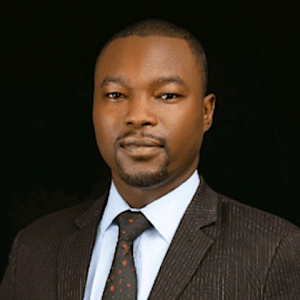The radical artist shedding light on humanity’s dark side
Written by Ananda Pellerin, CNNJenny Holzer is one of America’s most the incisive and respected conceptual artists. For four decades, her text-based works have been object lessons in the power of empathy and a conduit for the shared — if troubled — human experience, touching on everything from war, patriarchy and the AIDS crisis to gun violence and dangers of everyday life. “I wanted to be an abstract painter, but I was an absolutely failed one,” Holzer said over the phone from Northern Spain. “I wanted explicit content, but it’s hard to be an abstract painter who wants explicit content. So the painting went away, and the language came to the fore.” An early “Truisms” poster from 1977. Credit: Courtesy Jenny Holzer/ARS/VEGAPMillions of people the world over have been touched by her creations on paper and stone, in LED lights and projections; at galleries, in public spaces, on the sides of buildings; on condom wrappers, hats and Instagram captions. In 1982, she famously splashed maxims like “Protect Me From What I Want” and “Money Creates Taste” across an electronic billboard in Times Square; “Raise Boys and Girls the Same Way” can be regularly seen blazoned across people’s chests. And in the wake of the #metoo reckoning, another Holzer adage came back into heavy rotation: “Abuse of Power Comes As No Surprise.”Each of these statements are from the 68-year-old’s “Truisms” series, 250 “brief and merciful” maxims written between 1977 and 1979 that she plastered across Manhattan under a guise of anonymity.Jenny Holzer poses in front of her artwork “Inflammatory Wall” during a presentation of the “Jenny Holzer: Thing Indescribable” exhibition at the Guggenheim Museum in Bilbao, Spain. Credit: ANDER GILLENEA/AFP/AFP/Getty Images”At that time, I wasn’t sure what I was … I thought I might be just an odd person who puts things in the streets or does my own version of standing on a box at Speaker’s Corner,” she recalled of her first public art endeavor. “Being a tireless 20-something, I wanted to seem to be collecting all the points of view in a major city, and then implicitly ask the question: well, what do you do with all these very different points of view on these multiple topics, how do you govern, how do you decide where you fit in?” A detail of “Memorial Bench II: Eye cut by flying glass…” (1996) by Jenny Holzer. Credit: Courtesy Jenny Holzer/ARS/VEGAP/Erik SumptionNow, Holzer is posing these questions at “Jenny Holzer: Thing Indescribable,” a new exhibition at the Guggenheim Museum in Bilbao. While primarily a retrospective, the show also introduces timely new works by the artist, including “There Was a War,” a four-sided vertical LED sign that swings from the ceiling, featuring interviews and statements from people affected by the international refugee crisis and the civil war in Syria. Another new LED installation, “I Woke Up Naked,” presents first-hand testimonies from survivors of sexual assault and rape, written in English, Spanish and Basque. Sliding along a track system, the sign’s movement switches from predictable to erratic, a reminder of how a single incident can send someone’s life careening off course. Visitors walk past “Purple” (on the floor) and “I Woke Up Naked” at the Guggenheim Museum in Bilbao. Credit: ANDER GILLENEA/AFP/AFP/Getty ImagesThese pieces are both a continuation of Holzer’s long-standing efforts to give a voice to victims of conflict and violence and visually represent the titular “things indescribable,” and the realization of her mission to move beyond static pieces, so “not only is the text on the LED screen hyperactive, the electronic displays themselves traverse the rooms,” creating another layer of interaction among the works themselves and visitors to the museum. Though the themed exhibition rooms may suggest otherwise (Gallery 207: The unfulfilled promise of the Arab Spring; Gallery 208: The abuses of war; Gallery 209: Sexual violence) Holzer says she’s cautious about imposing her “at times bleak world view on anybody.” But her to-the-point yet resonant responses to human cruelty are what have made her one of the world’s most significant living artists. Her work is political, sure. But it is also philosophical, taking in the past, present and future of human struggle. A projection titled “For Bilbao” was projected on the Guggenheim Bilbao Museum’s facade as part of the “Jenny Holzer: Thing Indescribable” exhibition on March 21. Credit: ANDER GILLENEA/AFP/AFP/Getty Images”I believe (my) reaction of despair is accurate because any number of tremendously sad things are happening at any given time,” she says. “To live in good faith, one should make every effort to address what could harm us.” And what of hope? “Well, the effort to do this is inherently hopeful,” she said. “My purpose is not to demoralize. Some of the things that art has to offer can come as solace. That’s worth a try, no?” “Jenny Holzer: Thing Indescribable” is on at the Guggenheim Museum Bilbao until Sept. 9, 2019.






